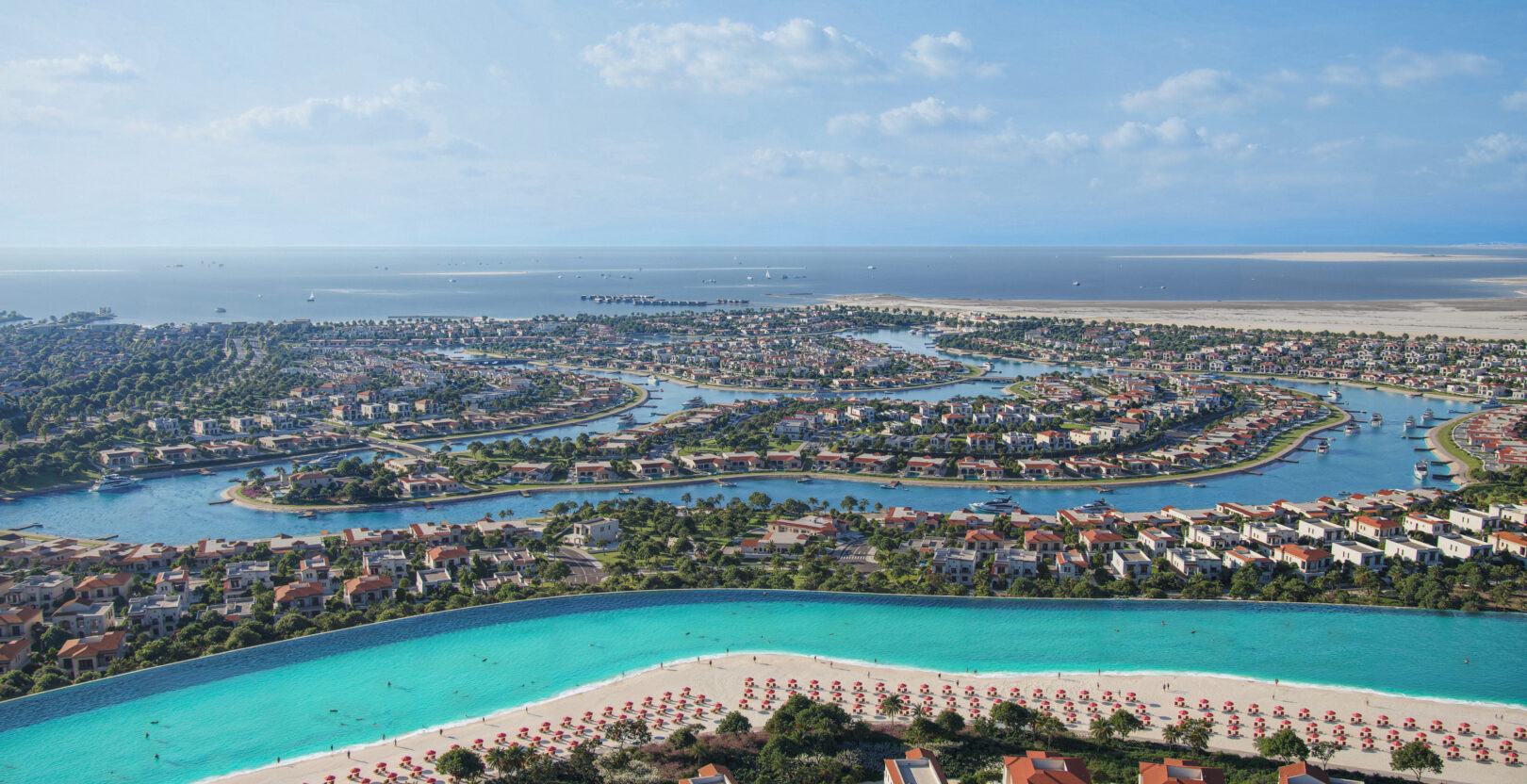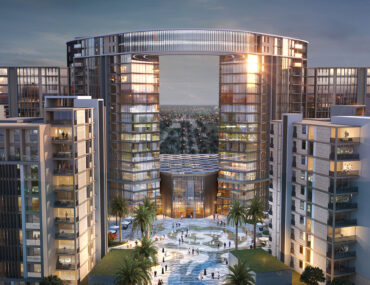The Red Sea coast of Egypt is moving into a new phase. What was once dominated by holiday-villages and seaside escapes is evolving into full-scale coastal cities built for living, investing, and global connection. Marassi Red Sea stands at the centre of this change. For developers, investors, and those watching Egypt’s property landscape it represents a shift in ambition and scale. What matters now is how it will compete with established benchmarks and whether it can deliver at the pace promised.
Origins and Positioning
Marassi Red Sea is being developed by Emaar Misr in partnership with Gulf investment firms, backed by a major commitment of around EGP 900 billion (approximately USD 18 billion) for the resort-city along the Red Sea coast. The site spans about 2,426 acres (around 10.2 km²) in the Soma Bay/Ras Soma area, positioned 30-40 minutes from Hurghada International Airport and along key highway links. The strategic location reflects intent: tapping into luxury tourism, resort living and investment at a scale that moves beyond simple second-homes.
The master plan outlines a resort ecosystem that includes marinas, elevated infinity beaches, swimmable lagoons, yacht clubs, a water-park, and a commercial and leisure zone called Marassi Wonders. From hotels to residences, the offering is built with global standards in mind. The intention is to combine natural beauty, luxury hospitality and a complete lifestyle offering rather than just resort units.
What Sets It Apart
The distinctions between the Marassi Red Sea and older coastal developments are evident. The scale is noticeably larger, to start. The project aims for year-round relevance rather than seasonal peaks by emphasising infrastructure, connectivity, and full resort-city amenities. To maintain horizon sea views, the elevated infinity beach, for instance, is 24 meters above sea level and 1.5 kilometres long. A model designed for long-term occupancy and investment is suggested by the inclusion of marinas with hundreds of berths and mixed-use areas with shops, hotels, and residences.
Second, accessibility and location are important. Marassi Red Sea has a logistical advantage due to its proximity to major highways, an international airport, and established resort areas. Many older resorts had to construct roads, utilities, and services after their residential offer because they had less infrastructure when they first opened. In this case, the developer seems to be building a pre-planned infrastructure base on top of the residential offer. The third, and possibly most significant, difference is the timing and branding. With its Marassi North Coast project, which reportedly drew millions of tourists in a short period of time, Emaar Misr already has experience.
Because of this history, the new project has a story of successful luxury resort development, which could reassure buyers and investors weighing their options.
How It Compares With El Gouna
El Gouna has held the position of luxury benchmark on the Red Sea coast for years. Designed with high-end resort living, marina lifestyle, and long-stay tourism in mind, it becomes the natural reference point. Marassi Red Sea does not need to replicate the model, but rather to offer an alternative: one that raises the parameters of size, infrastructure and international positioning.
Marassi Red Sea is a newcomer, larger in scope, and positioned for the next wave, in contrast to El Gouna, which is established, mature, and has a community. Thus, there is a greater chance of risk and reward. El Gouna, for instance, boasts an established service-business ecosystem. In order to convey value to investors and buyers, Marassi must activate its entire master plan and supporting infrastructure. Delivery could make all the difference. The value gap might close rapidly if Marassi meets its deadlines.
For developers and investors the question is: will Marassi deliver the promised amenities, connectivity and global audience, or will it fall into a slower ramp-up like many large resorts do? The answer will determine whether it becomes a peer to El Gouna or simply an ambitious project still finding its bearings.
What It Means for Buyers and the Coastal Market
For buyers and investors in 2025 the opportunity offered by Marassi Red Sea comes with a new set of dynamics. Because the project is large and early-phase, the entry ticket may offer upside if value accumulates as promised. The combination of resort amenities, transportation access, and international-level services may attract both holiday-use buyers and long-stay residents.
Buyers should, however, enquire about infrastructure delivery, occupancy, service readiness, and phasing. Just as important as design and location will be the calibre of the roads, utilities, maintenance systems, and integrated services. Egypt’s coastal real estate market is still moving away from the weekend getaway model and towards the full-lifestyle model. Projects that encourage residence rather than just escape will be successful. Marassi’s stance implies that consciousness.
From a market perspective Marassi Red Sea could signal a deeper change in the Red Sea region: the coast will become more than a tourism weekend destination; it may become a place to live, invest and stay. That means new benchmarks for developers, higher expectations for services, and growing competition among coastal destinations.
Outlook for the Next Wave
Looking ahead, Marassi Red Sea’s success matters not only for its own parcels but for what it signals about Egypt’s coastal real-estate market. If the project performs, we may see more developments of similar scale in under-tapped regions, deeper foreign investment, and a shift in how coastal properties are conceived. Developers may move away from purely seasonal models to fully integrated destinations with residence, hotels, serviced apartments and year-round infrastructure.
At the same time the challenge remains: macro-economic pressures, currency fluctuation, construction cost inflation and regulatory clarity all play a role. The larger the project, the greater the exposure to these risks. The next few years will show whether Marassi can meet expectations or whether the rush toward scale will force adjustments and slower roll-out.
Conclusion
Marassi Red Sea captures a turning point in Egypt’s Red Sea development story. Its ambition and scale make it one to watch. Whether it becomes a true heir to El Gouna or defines a new class of coastal project will depend on execution. For now the spotlight is on how this development unfolds and how the coast will look when it does.



